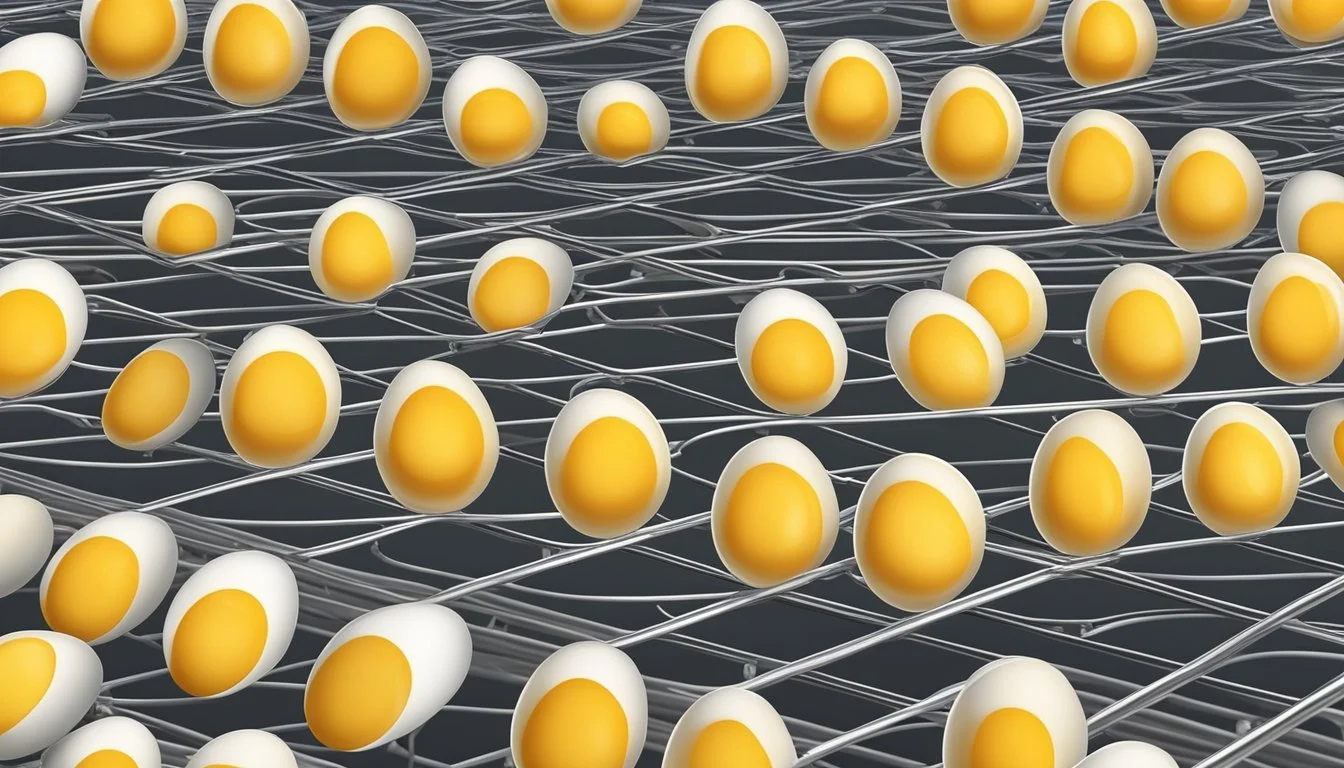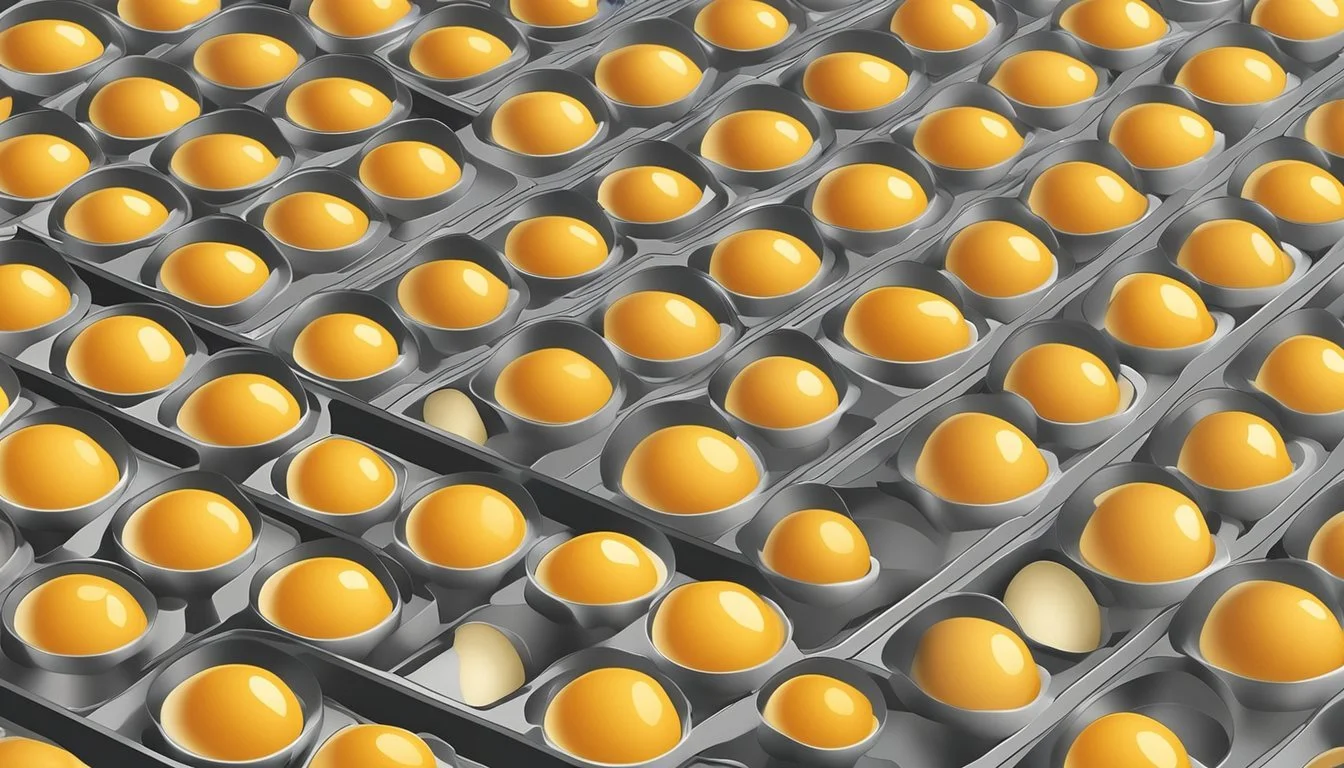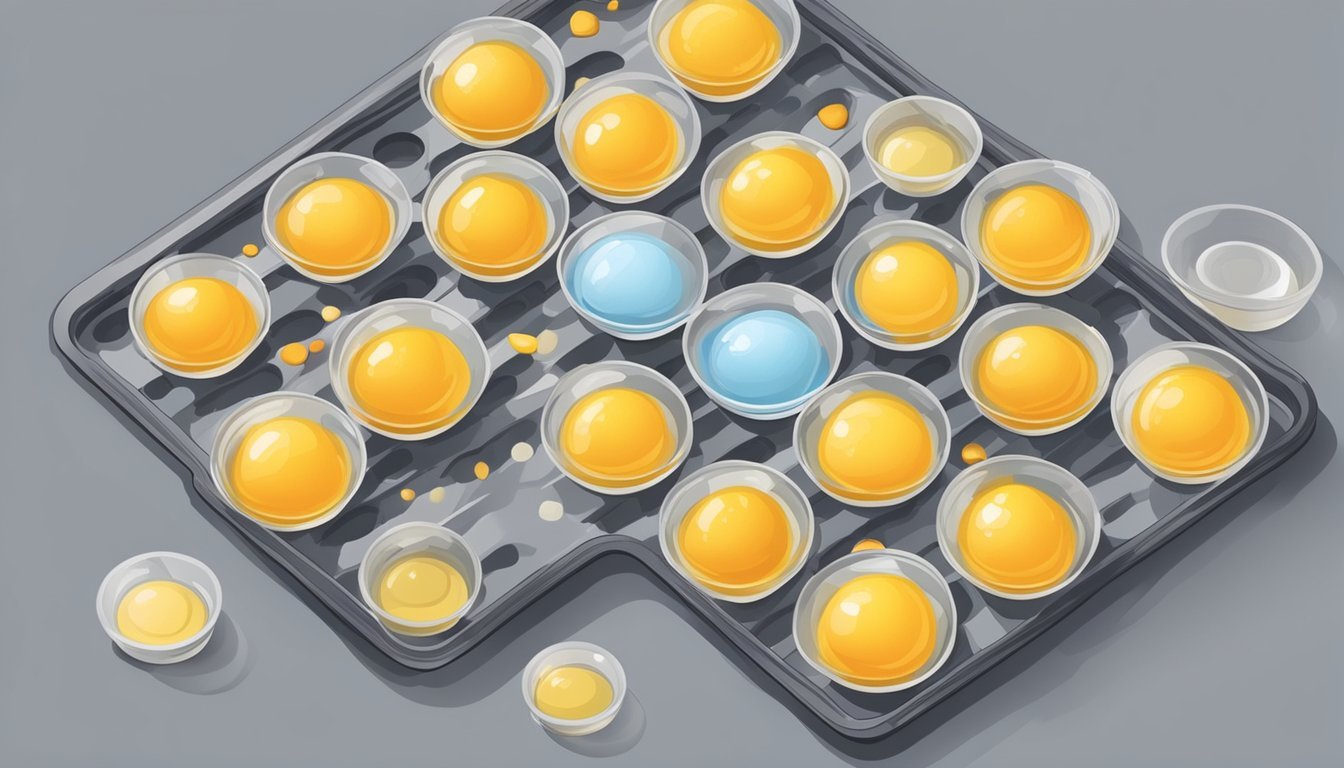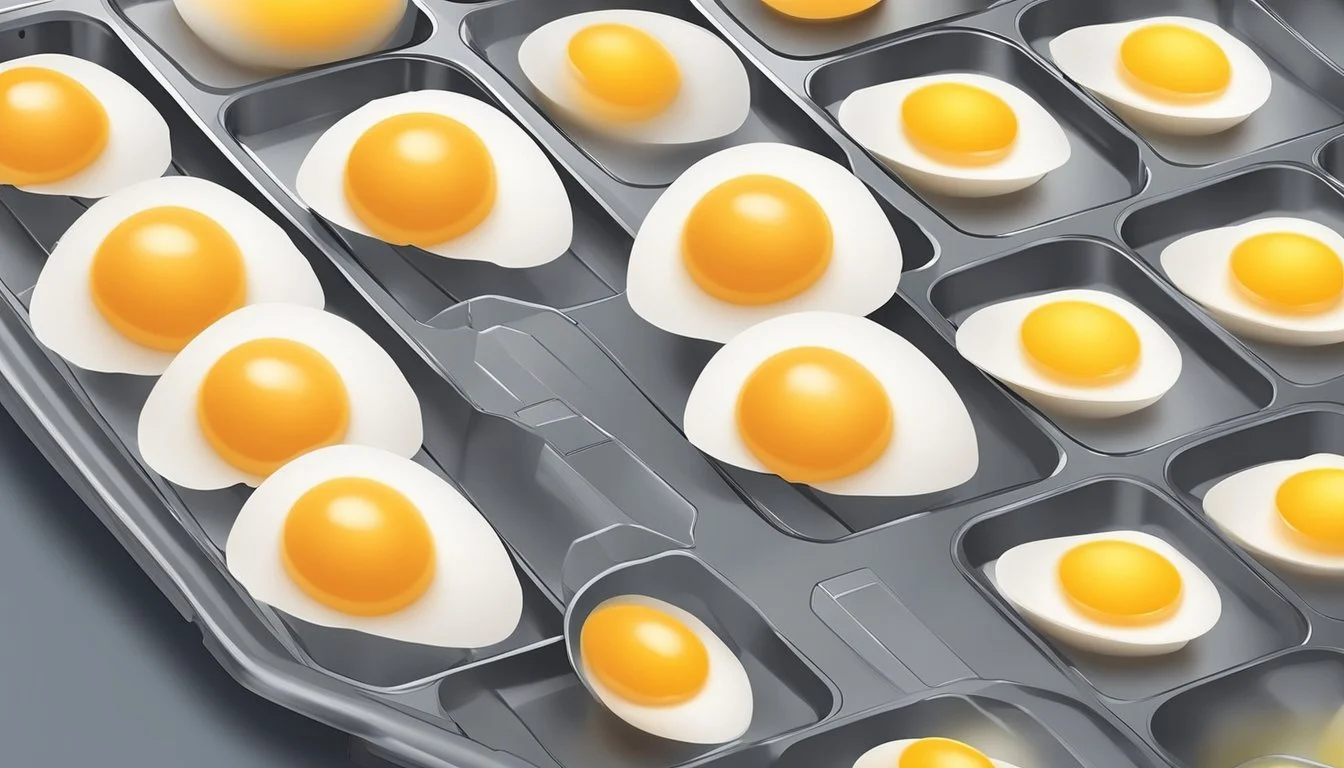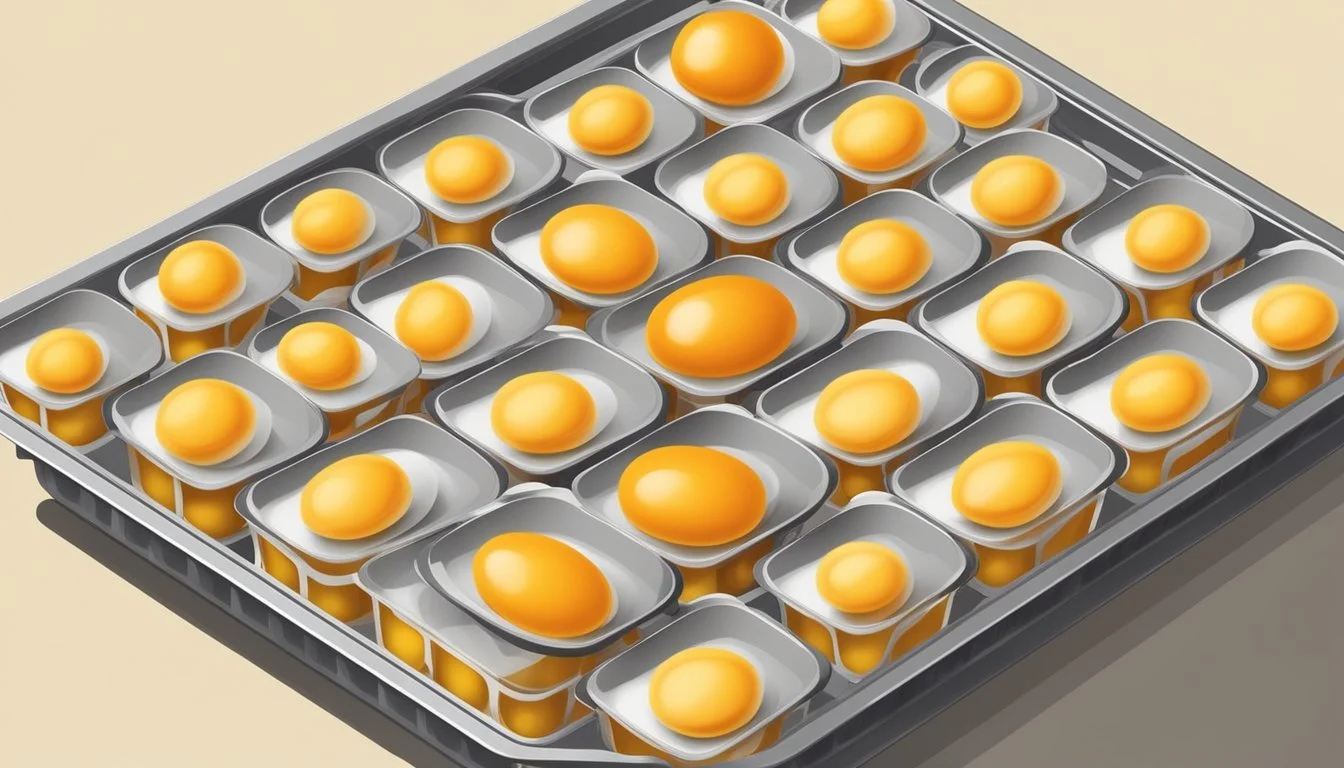How to Dehydrate Egg Yolks
A Step-by-Step Guide for Preservation
Dehydrating egg yolks is an efficient method to preserve the nutrient-dense part of the egg for long-term storage without refrigeration. Egg yolks are rich in proteins and essential vitamins, making them a valuable food source. When dehydrated, they can be easily powdered and used in various recipes, from baking to enriching smoothies. The process of removing moisture ensures that the egg yolks are safe from spoilage and bacteria growth, which is paramount for extending their shelf life.
The procedure for dehydrating egg yolks involves separating them from the egg whites and then using either a dehydrator or an oven at a low temperature to draw out moisture. This careful drying process retains the egg yolk's flavor and nutritional content. The dehydrated product can then be ground into a fine powder, offering a convenient and space-saving solution for those who may not have immediate use for fresh yolks.
Egg yolk dehydration appeals to individuals ranging from avid home cooks to outdoor enthusiasts who require lightweight, nutritious foods. The powdered form is not only practical for storage and transportation but also versatile in application. It can be reconstituted with water for use in recipes or added directly as a protein supplement. This self-sustaining technique aligns well with sustainable living practices, reducing dependency on refrigerated storage and minimizing food waste.
Understanding Egg Yolk Dehydration
Dehydrating egg yolks is a method of preserving the nutrient-rich component of eggs by removing moisture. It ensures a longer shelf life and provides a convenient, space-saving option for egg storage.
Dehydrated egg yolks are sometimes referred to as cured egg yolks one of the most popular methods for cured yolks is salt-cured yolks which have an almost cheddar-like consistency and taste.
Curing egg yolks can be done with a food dehydrator, oven, air fryer, or microwave. Some people leave eggs to cure in the sun.
Individuals must ensure that the device can maintain a consistent temperature, as fluctuating heat levels can affect the quality of the dehydrated yolks.
The duration of dehydrating egg yolks can vary. It generally takes approximately 8 to 10 hours, depending on the dehydrator's efficacy and the size of the yolks. The goal is to achieve a powdery consistency, with no visible moisture.
By removing water content through dehydration, individuals can keep egg yolks usable for a significantly longer period than their fresh counterparts. This process is invaluable for those looking to maximize the shelf life of their eggs.
Preparing the Egg Yolks
Before one starts the dehydration process, one must ensure that the egg yolks are properly prepared. The first step is to separate the yolks from the whites. This is crucial because the dehydration times for egg yolks and whites differ due to their unique consistencies and moisture content. One can perform this task by carefully cracking the eggs and transferring the yolk back and forth between the shell halves until all the white has dripped away.
Once the yolks are separated, gently blend or whisk them to achieve a uniform consistency. Scrambling the yolks is unnecessary; the goal is simply to break them down so they are smooth. This step is crucial for even dehydration, as clumps or varying textures can lead to an unevenly dried product.
Next, if one desires a more flavorful end product, there’s an option to season the yolks. This could be as simple as a pinch of salt, or they could incorporate herbs and spices to preference. If the goal is to use the dehydrated yolks in a variety of recipes later, it might be best to skip this step and leave them plain to maintain versatility.
Finally, a chef should cook the yolks at a low temperature until they slightly thicken. This can be done using a non-stick pan on low heat. The pre-cooking helps to solidify the yolks and can shorten the dehydration time.
Once these steps are complete, gently place them in a dehydrator or low-preheated oven to begin the drying process.
Alternatively, you can salt-cure egg yolk whole, so that they retain their round shape, this involves separating them well without breaking them and leaving them to individually dry in coarse salt. Salted egg yolks are a cultural delicacy in many places.
Dehydrating Process
Dehydrating egg yolks requires careful attention to temperature and timing to ensure a stable shelf life. The following methods detail specific steps one should take to dehydrate egg yolks effectively.
Using a Dehydrator
To dehydrate egg yolks:
Separate the yolks from the whites.
Place the yolks in a food dehydrator set between 135°F to 145°F.
Spread yolks evenly on the dehydrator trays.
Using a dehydrator ensures that the temperature is controlled, reducing the risk of salmonella growth.
Using an Oven
For those without a dehydrator:
Preheat the oven to the lowest temperature setting, ideally around 150°F.
Spread yolks on a parchment-lined baking sheet.
Bake until the yolks are fully dehydrated while frequently checking to prevent scorching.
Alternative Dehydrating Methods
Sun Drying: Lay yolks on screens and cover with cheesecloth. Place in direct sunlight.
Air Circulation: Use a fan in a dry, warm room.
These methods are more weather and environment-dependent and may not consistently produce safe, dehydrated egg yolks.
Safety Considerations
Always start with fresh, clean egg yolks.
Cooked Eggs: Some choose to cook yolks to 160°F before dehydration to eliminate salmonella.
Proper hygiene and temperature control are critical to prevent bacterial growth.
Determining Dehydration Completion
Dehydrated yolks should be:
Hard and crumbly to the touch.
Stored in an airtight container to extend shelf life.
Test by pressing; if the yolk crumbles, it is ready. Properly dehydrated egg yolks can be stored in a refrigerator to prolong shelf life further.
Storing Dehydrated Egg Yolks
Proper storage is essential for maintaining the quality and extending the shelf life of dehydrated egg yolks. They must be kept in conditions that minimize exposure to air and moisture to remain shelf-stable.
Airtight Containers
For long-term storage, dehydrated egg yolks should be placed in an airtight container such as glass jars or heavy-duty plastic containers with tight-fitting lids to prevent moisture and air ingress, two factors that lead to spoilage.
Shelf Life: Up to 10 years when stored correctly
Conditions: Cool, dark, dry place away from direct sunlight
Mylar Bags with Oxygen Absorbers
Mylar bags with oxygen absorbers offer an excellent option for preserving dehydrated egg yolks. The absorbers remove oxygen that can deteriorate the food, thus extending its shelf life significantly.
Instructions:
Place dehydrated egg yolks in a mylar bag.
Add an appropriate-sized oxygen absorber.
Seal the bag using a heat sealer.
Refrigeration and Freezing Options
While not essential for dehydrated yolks, refrigeration or freezing can further extend shelf life and maintain quality. These environments are low in moisture and reduce the risk of bacterial growth.
Freezer Shelf Life: Indefinite
Refrigerator Shelf Life: Several years, although not necessary
Labeling and Dating
Every storage container or bag should be clearly labeled with the contents, date of dehydration, and expected shelf life. This helps track how long the egg yolks have been stored and ensures they are used within the optimal timeframe.
Rehydrating for Use
When rehydrating dehydrated egg yolks, it's vital to restore the texture and maintain as much nutritional value as possible. Proper reconstitution methods allow the yolks to be seamlessly incorporated into various recipes.
Reconstituting Dehydrated Egg Yolks
To reconstitute dehydrated egg yolks, one typically combines the dehydrated yolk powder with a specific amount of water. A common ratio is 1 part egg yolk powder to 1 part water by weight. Stirring the mixture until it's consistent and smooth is critical for even rehydration. It's crucial to use warm water to ensure better solubility and a smoother consistency.
Steps for Rehydration:
Measure the required amount of egg yolk powder.
Add an equal part of warm water by weight.
Stir continuously until fully incorporated.
Using Dehydrated Egg Yolks in Recipes
Dehydrated egg yolks can be used in various recipes, particularly baked goods where they can provide the necessary binding and richness. Once rehydrated, they should be mixed thoroughly with other ingredients to ensure even distribution. When the recipe calls for whole eggs, additional adjustments may be necessary to account for the absence of egg whites.
Common Uses in Recipes:
Custards (how long do custards last?) and ice creams
Mayonnaise and sauces
Cakes and cookies
Taste and Texture Adjustments
The taste and texture of rehydrated egg yolks are close to that of fresh yolks but might require slight adjustments. If the yolk's texture seems too thick or grainy after reconstitution, gradually adding more water until the desired consistency is achieved can remedy this. To ensure the yolks blend well with other ingredients and retain their nutritional value, avoid overheating during preparation.
Tips for Taste and Texture:
Add water incrementally if the consistency is too thick.
Use rehydrated yolks promptly to maximize flavor.
Adjust seasoning in recipes as some flavors might be subdued.
How to Make Salt-Cured Egg Yolks
Salt-cured egg yolks can be made by layering kosher salt, or rock salt (how long does rock salt last?), on a tray to create a salt bed.
Some people prepare a salt mixture that has a blend of herbs or aromatic spices, this is down to individual preference. Others prefer to balance the taste and prepare a salt and sugar mixture. Sugar doesn't make the yolk taste sweet it just makes the salt less overwhelming.
Regardless of the choice, prepare the salt mixture and separate your whites. Use the back of a spoon to create indentations in the salt bed and place the yolks carefully in. Then use the remaining salt mixture over the tops until they are completely covered. Then cover the tray in plastic wrap and refrigerate it for a couple of days to salt cure before replacing in a dehydrator for 2-3 hours to dry out and preserve the cured egg yolk. Throw away excess salt mix, do not reuse with new raw chicken eggs.
Salt-cured eggs have an umami flavor all of their own, the salt draws out all moisture giving a texture that can be easily sliced, shaved, powdered, or grated. It can be used in place of table salt and hard cheese.
Salt and Sugar Mixture
Dried bay leaves, dried lemon, peppercorns, and blended mustard seeds are all popular choices that complement the flavor of salt-cured eggs. Dried mushrooms (how long do dried mushrooms last?) and cayenne peppers can provide interest too depending on whether you want to draw out an earthier taste or give your salt-cured eggs a kick.
The salt and sugar mixture should be a dry course powder so using dried items is easiest but you can cook and prep herbs into stock-like cubes leave them to dehydrate and pop them in a blender.
The salt you use should be coarse with larger crystals to help suck out the moisture efficiently and speed up the salt curing process, many favor rock salt for its earthy tones, and kosher salt can be used to address religious issues.
Health and Nutritional Considerations
When dehydrating egg yolks, one must consider both the health benefits and safety precautions to retain nutritional value and minimize risks such as salmonella contamination.
Nutritional Value: Egg yolks are a dense source of nutrients, including proteins, vitamins such as A, D, E, and K, and minerals like calcium and phosphorus. They are also high in cholesterol and fat, which should be consumed in moderation. Dehydrating egg yolks preserves most of these essential nutrients, making them a valuable addition to a balanced diet.
Proteins: Crucial for muscle repair and building.
Vitamins: Support immune function and cell health.
Minerals: Essential for bone health and metabolic processes.
Safety: The process of dehydration must be carefully managed to ensure safe consumption.
Temperature Control: Maintain a temperature of at least 160°F during dehydration to effectively reduce the risk of salmonella and other pathogens.
Storage: Store the dehydrated yolks in airtight containers to prevent moisture and bacterial growth.
Salmonella: Eggs can be contaminated with salmonella, a bacteria causing foodborne illness. Proper dehydration and storage significantly reduce the risk of salmonella, making dehydrated yolks a safer option.
Pasteurization: Consider using pasteurized eggs, which have been heat-treated to kill bacteria without cooking the egg.
Hygiene: Always practice good hygiene when preparing yolks for dehydration.
The nutritional values for dried duck eggs and quail (What wine goes well with quail?) eggs will be higher and lower respectively when compared to chicken eggs.
Salt-cured egg yolks have a high salt content, although all excess salt should be removed, but for that reason, they should be served with unsalted dishes, or used in place of salt in recipes, too much salt is unhealthy.
Innovative Uses for Dehydrated Egg Yolks
Dehydrated egg yolks offer a diverse range of applications, especially in the culinary world. They serve as a valuable ingredient for home bakers and cooking enthusiasts who appreciate long shelf life without compromising on flavor and utility.
Bakery Products: They infuse richness into bakery items, much like traditional eggs. When rehydrated, they integrate seamlessly into doughs and batters, enhancing cakes, pastries, abreadads with a tender crumb and golden hue that only egg yolks can impart.
Pasta Making: In homemade pasta (how long does pasta last?), dehydrated egg yolks can be rehydrated and added to the mix, resulting in a luxurious and richly flavored final product. They contribute to the pasta’s appealing color and delicate texture, which is prized in high-quality pasta dishes.
Seasoning: Powdered dehydrated egg yolks can become an innovative seasoning agent. One can sprinkle it over finished dishes like salads, pasta, popcorn, (how long does popcorn last?) and roasted vegetables for an umami-rich, creamy taste accent.
Thickening Agent: They can act as thickeners for sauces and custards. By incorporating dehydrated yolks, chefs achieve a dense, creamy consistency without altering the taste profiles of their creations.
Savory Toppings: Grated or crumbled, they add an unexpected flavor burst and delightful crunch when used as toppings on various dishes, from soups to risottos. You can shave them into ribbons or chop them into thin slices for salads.
Food Preservation: In the sphere of traditional food preservation, these yolks, when cured in salt, extend their shelf life and can be used to enrich dishes with a concentrated egg flavor months after the initial preparation.
Given their versatility, dehydrated egg yolks are an innovative and practical ingredient that home gourmands shouldn't overlook.
Making Powdered Eggs
Dehydrated egg yolks can be transformed into a versatile cooking ingredient known as powdered eggs. The process involves two main steps: grinding the dehydrated yolks and then blending them into a useful cooking powder.
Grinding Dehydrated Egg Yolks
Once the egg yolks are fully dehydrated, they are ready to be ground into a fine powder. This is best achieved using a coffee grinder or food processor. Here are the steps:
Ensure the grinder or processor is clean and dry.
Break the dehydrated yolks into smaller pieces that can easily fit into the appliance.
Pulse the yolks until they reach a fine, consistent powder.
Sieve the powder to remove any larger particles.
Store the powdered yolks in an airtight container to preserve freshness.
Creating Blends for Cooking
Powdered eggs can be customized for various culinary applications:
Baking Blend:
Combine 2 parts powdered egg yolk with 1 part cornstarch (how long does cornstarch last?) to prevent clumping.
Utilize this blend in recipes for cakes, cookies, and other baked goods.
General Cooking Blend:
Mix powdered egg yolks with dried egg whites in equal proportions.
This blend can be reconstituted with water for dishes like omelets and scrambled eggs.
Use a blender or food processor for mixing large batches, ensuring a homogenous blend. Store each blend in clearly labeled, airtight containers to maintain quality.
Longevity and Shelf-Life Management
When managing the shelf-life of dehydrated egg yolks, one must consider the conditions under which they are stored. Properly dehydrated egg yolks can be shelf-stable for up to 10 years. The key to longevity is in the removal of moisture and the prevention of oxidation.
Optimal Storage Conditions:
Temperature: Keep the dehydrated egg yolks in a cool, dark place. Ideally, storage temperatures should not exceed 68°F (20°C).
Humidity: Ensure the storage area is low in humidity; a desiccant or moisture absorber can be beneficial.
Container: Use air-tight containers, preferably with oxygen absorbers, to minimize air exposure.
Light: Protect the yolks from light exposure to prevent deterioration.
By adhering to these storage principles, one can maintain the shelf stability of the dehydrated yolks, ensuring they are safe to consume and retain their nutritional value over time. Regular checks for signs of spoilage, such as discoloration or off-odors, are advised to ensure the dehydrated yolks remain viable for use.
Incorporating into Baking
When it comes to baking, the dehydrated egg yolk shines as a means of adding depth to the taste and texture of baked goods. Bakers can integrate powdered egg yolk directly into their dough or batter, enhancing the richness without altering the moisture content significantly. This is particularly useful in recipes for shortbread, cookies, and even homemade pasta where the yolk contributes to a tender crumb and golden hue.
Enrichment in Sauces and Dressings
Sauces and dressings benefit from the addition of egg yolk, particularly when it's dehydrated, as it acts as an emulsifying agent. A chef might whisk a small amount of powdered yolk into a vinaigrette to achieve a creamy consistency without the need for fresh yolks.
Similarly, mayonnaise or hollandaise sauce can be prepared using dehydrated yolks, ensuring a safe and stable emulsion that is rich in flavor. One can also grate cured egg yolks such as salt-cured egg yolks on pasta dishes in place of parmesan cheese, for a rich umami flavor, or add salted egg yolks to a pesto.

